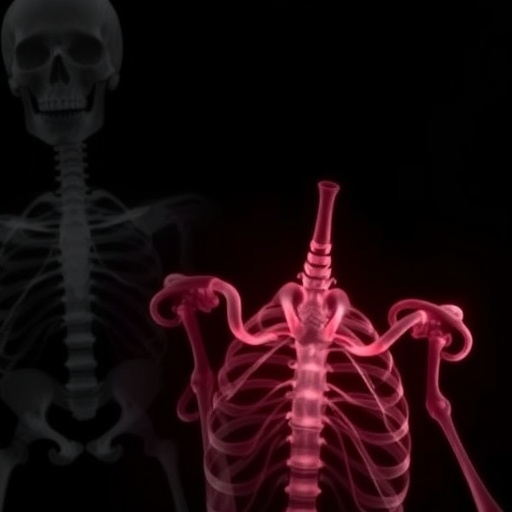Stevens-Johnson Syndrome (SJS) and Toxic Epidermal Necrolysis (TEN) represent some of the most severe adverse drug reactions encountered in clinical medicine, characterized by acute immune-mediated attacks on the skin and mucous membranes. These conditions, though rare, are life-threatening and leave survivors grappling with far-reaching consequences that persist long after hospital discharge. A groundbreaking qualitative study conducted by investigators at Vanderbilt University Medical Center’s Center for Drug Safety and Immunology (CDSI) sheds new light on these lasting effects, focusing on the lived experiences and long-term recovery challenges faced by patients. The findings, published in the prestigious journal JAMA Dermatology, reveal a compelling narrative of physical, emotional, and social trials endured by survivors, underscoring an urgent call for more integrated and compassionate post-acute care.
Unlike previous research predominantly centered on acute clinical management, this study employed qualitative methodologies, including extensive patient interviews, to capture a comprehensive patient-centered perspective on recovery from SJS and TEN. This approach allowed researchers to delve into the nuances of survivors’ journeys, revealing a multi-layered aftermath that often remains invisible within traditional medical frameworks. The immune system’s aberrant response to offending medications triggers widespread epidermal necrosis, resulting in extensive skin detachment and mucosal sloughing. However, while acute medical interventions focus intensely on saving lives during the crisis, this study highlights the neglect of long-term rehabilitation and psychological support.
The immune-pathophysiology of SJS and TEN involves a dysregulated immune reaction, primarily mediated by cytotoxic T cells and natural killer cells that cause widespread keratinocyte apoptosis. This process leads to the detachment of the epidermis from the dermis, creating raw, painful denuded areas that compromise the skin’s protective barrier. The acute phase is managed through supportive care in burn units or intensive care settings, emphasizing fluid management, infection prevention, and wound care. Yet, the transition from acute hospital care to home often leaves survivors vulnerable and unsupported, compounding the risk of chronic morbidity.
Elizabeth Phillips, MD, the director of CDSI and senior author of the study, emphasizes how the qualitative data reveals the “invisible aftermath” of these syndromes: a combination of profound loneliness, post-traumatic stress, and ongoing physical debilitation faced by survivors. Physicians, who may only encounter SJS or TEN once in their entire careers, are often unprepared to address the nuanced long-term sequelae. This gap in care reflects a broader systemic deficiency in our healthcare infrastructure, where the focus on acute survival eclipses the necessity for comprehensive rehabilitation strategies.
The research team discovered that survivors frequently encountered a void upon discharge, characterized by an absence of educational resources and guidance on managing their new health realities. Physical complications such as persistent skin sensitivity, chronic pain, and severe ocular damage including visual impairment were common. Moreover, survivors confronted psychological distress manifesting as flashbacks, anxiety disorders, depression, and medication mistrust, all of which significantly erode quality of life. The study’s narratives suggest that surviving these syndromes does not equate to recovery but marks the beginning of a complicated and isolating journey.
Michelle Martin-Pozo, PhD, lead author and program director for the CDSI, underscores the necessity of multidisciplinary follow-up care to bridge this critical post-discharge gap. Mental health support, ophthalmologic care, and patient-centered educational interventions must become integral components of SJS/TEN recovery protocols. Another vital insight from the study is the need for family and caregiver education to foster a supportive environment essential for psychological healing and adherence to medication avoidance strategies that prevent recurrence.
Beyond the individual level, the findings call for improved physician education and awareness to better understand the patient experience and long-term impact of SJS and TEN. Enhanced training would enable clinicians to recognize residual complications adequately and facilitate timely referrals to specialists. Such systemic improvements promise to transform patient trajectories, mitigating chronic complications and fostering holistic recovery.
From a biomedical research standpoint, this work situates itself within the expanding framework of precision medicine. Understanding genetic susceptibilities, immunogenetic profiles, and pharmacogenomics will eventually refine risk stratification and pave the way for personalized therapeutic approaches that prevent such severe drug reactions. Meanwhile, embedding patient narratives in clinical care emphasizes the critical human dimension often overlooked in precision health initiatives.
Funded by the National Institutes of Health, this study exemplifies VUMC’s leadership in pioneering patient-centered research on drug safety and immunology. By integrating behavioral science and qualitative methodologies with biomedical expertise, the research team has delivered invaluable insights poised to reshape clinical guidelines. The alignment of rigorous scientific inquiry with compassionate care frameworks heralds a new era for managing complex adverse drug reactions such as SJS and TEN.
In summary, the study establishes that surviving Stevens-Johnson Syndrome and Toxic Epidermal Necrolysis is only the beginning of a prolonged recovery process often accompanied by chronic physical and psychological sequelae. The invisible burdens borne by survivors demand a paradigm shift in patient care, toward comprehensive discharge planning, mental health integration, and sustained multidisciplinary follow-up. This research not only enriches the scientific understanding of SJS/TEN recovery but calls for actionable reforms to alleviate suffering and improve long-term outcomes for these vulnerable patients.
Subject of Research: Recovery and long-term effects of Stevens-Johnson Syndrome (SJS) and Toxic Epidermal Necrolysis (TEN) from the patient perspective
Article Title: Recovering From Stevens-Johnson Syndrome and Toxic Epidermal Necrolysis
News Publication Date: 12-Nov-2025
Web References:
10.1001/jamadermatol.2025.4345
Keywords: Allergic reactions, Immune disorders, Drug-induced skin diseases, Post-acute care, Patient-centered recovery




